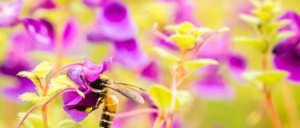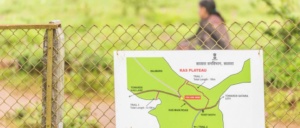As monsoon takes over, the Kaas Plateau comes to life with its indigenous blooms. It’s what draws enthusiasts from around the region, given its proximity and easy access from Satara. That, is exactly what afflicts this Unesco Heritage Site, as it battles for survival each season.

First published:
https://www.thehindubusinessline.com/blink/know/plateau-in-peril/article8280969.ece
Plateau in peril
Tourism is killing the fragile biodiversity of Kaas plateau, a Unesco Heritage Site in the Western Ghats
Vishal Prasad’s bike comes to a halt a little past the main area that marks the Kaas plateau. Sachin Suryawanshi, who aids Prasad in his work at the Biodiversity Research and Conservation Foundation (BRCF), is waiting by the roadside, engrossed in a handbook on the flowers that make the plateau a tourist hub on weekends. Prasad, the founder of BRCF, walks towards a few nondescript shrubs — which form a contrast to the riot of colours at the hilltop — and takes a closer look at them before calling us over. “This is the Ceropegia media or Kharpudi bud and is indigenous to the Kaas plateau,” he says. “We believe this is the last known plant that bears this flower in this area.” He examines the plant closely and breaks into a nervous smile. “I see two more buds. I hope they survive,” he says, as the clouds clear and the sun lights up the plateau’s flower carpets, dotted by the occasional tourist making his way to the centre for the perfect selfie.
Every weekend, cars line up on the road that cuts right through the plateau, declared a Unesco Heritage Site in 2012. The vehicular traffic and the human presence are proving detrimental to this unique ecosystem at an elevation of 1,213m in the Sahyadri hills of the Western Ghats, about 20km from Satara, Maharashtra. So fragile is this biodiversity that a few feet down from the main plateau, there’s no sign of some of the flowers that bloom atop it. The cars bring along pollen alien to the region, and once these plants come to life and multiply, they threaten the endemic species. As a result, 47-odd flowers found here have now been declared critically endangered.
Shekhar Mohite, professor of botany at Lal Bahadur Shastri College in Satara, and the author of Flowers of Kaas Plateau, had led the Unesco team here and has been instrumental in carrying out studies on the plateau. “In the past, there have been attempts to try ex-situ conservation (endangered flowers were relocated from the plateau to protected areas), but the micro climate in which they flourish is typical to the plateau,” Mohite says. “The soil and the microorganisms, in addition to the temperature and humidity, cannot be replicated in a lab or greenhouse, and hence they have a low survival rate. Though seed banks have also been planned, reintroducing them to the plateau will be as difficult. For now, the only way to preserve these flowers is by natural conservation,” he adds.

Aparna Watwe, assistant professor at Mumbai’s Tata Institute of Social Sciences, had done a study on the plant communities on the lateritic plateaus of Satara, and believes the complex interrelationship between the plants, animals and environment make it difficult to grow them in a controlled environment. “Shivaji University’s (in Kolhapur) project on aquatic plants had managed to maintain Aponogeton satarensis in aquariums. Some efforts to grow Impatiens and Utricularia have been successful in a limited way,” she says.
Like the Ceropegia media, there are other species that sparsely dot the plateau. In fact, the Strobilanthes sessilis or Topli karvi, which blooms only once in seven to eight years, can be seen on the plateau this season.
But there may come a time when some plant species may be wiped out permanently. “Only a few Adelocaryum malabaricum remain on Kaas now. I have seen only one in the past five years, while I clearly remember seeing many more around eight years ago, before the tourism boom,” says Prerna Agarwal, whose project explores the ecological impact of tourism and the need to develop community-based tourism at Kaas plateau.
“Growing species ex-situ and then transplanting them in their natural environment is not uncommon. This is generally taken as a desperate measure for species on the verge of extinction. However, protecting the wild gene pool is equally important, which can be done by conserving the species in its natural habitat,” she adds.
A policy was framed in 2012 allowing only 200 vehicles a day on Kaas Pathar, as the plateau is locally known. A parking lot was also planned at the base of the hill. But since the road leads to Kaas and Bamnoli villages, as also the popular tourist hill-town of Mahabaleshwar, any attempt by the short-staffed forest department to curtail the entry of vehicles proved futile. In fact, until three years ago, cars even used to drive over the flower beds, until environmentalists had fences put up. “Vegetation trampling is the biggest threat faced by the plateau. Added to this, there is a lot of solid waste generation and pollution due to growing tourism,” says Agarwal.
Prasad’s BRCF conducts regular research on the wildlife that survives in the area, and on the effect human interference has had on the environment. The Joint Forest Management Committee was formed to aid conservation; it worked towards sensitising villagers on the importance of the Kaas plateau. The committee employed the villagers to manage the surroundings, in addition to having them as guides.
Though there are similar plateaus in Maharashtra, Goa and Karnataka, they are currently inaccessible to tourists and the only way to get there is on foot. Once a road is cut through these verdant sites, it is only a matter of time before they face similar problems. Kaas plateau is a pilot project of sorts and its conservation holds the key to other such environments in the Western Ghats.